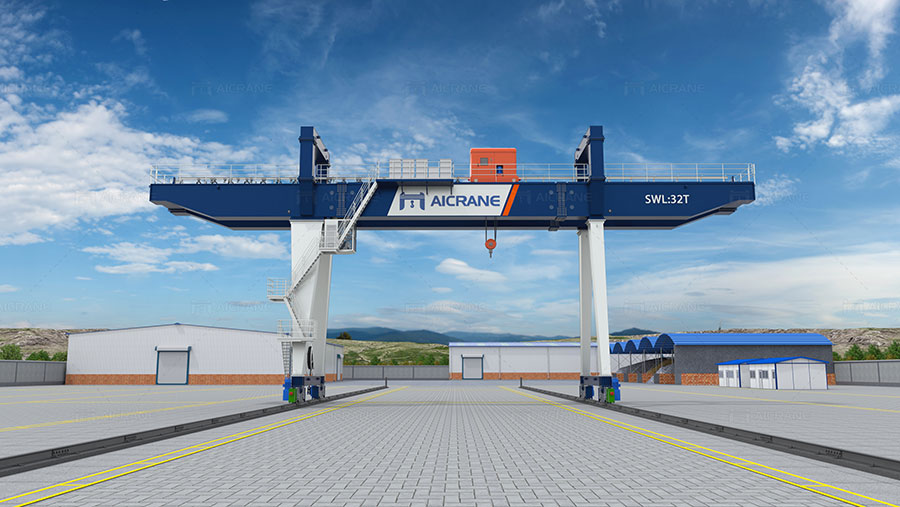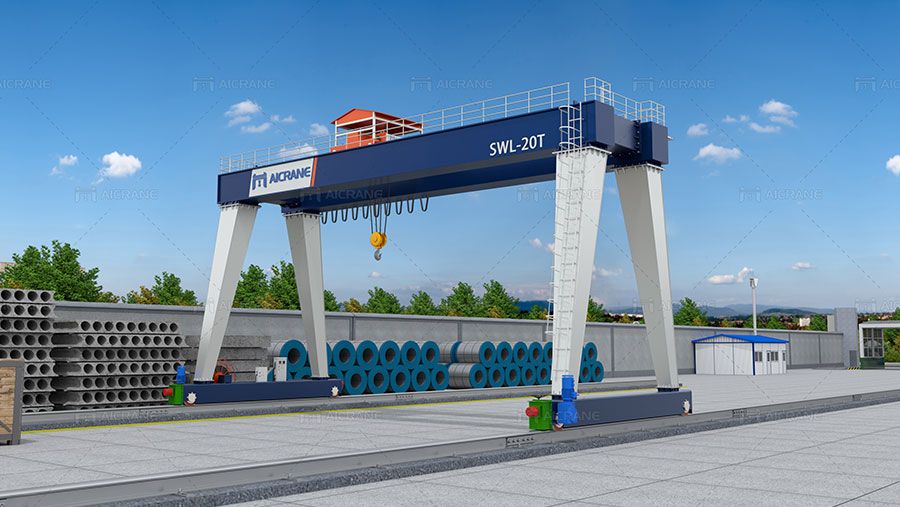When considering the purchase of a gantry crane, one of the most significant factors that buyers must take into account is the price. Gantry cranes, essential pieces of equipment used in industries ranging from construction to ports and manufacturing, come at varying price points depending on the manufacturer. The differences in price may seem perplexing at first, but understanding the key factors that influence pricing can help businesses make informed decisions. In this article, we will explore why gantry crane prices vary between manufacturers and the factors that play a role in the pricing structure.

1. Quality of Materials and Components
One of the most significant factors contributing to the price of gantry crane is the quality of the materials and components used in its construction. Manufacturers that use higher-grade steel, advanced components, and durable materials will generally offer more expensive cranes. Premium manufacturers invest heavily in sourcing the best raw materials and components to ensure that the cranes are not only efficient but also long-lasting and capable of handling heavy-duty lifting tasks.
For instance, gantry cranes equipped with higher-end motors, advanced control systems, and custom-built wheels or hoists will naturally cost more due to the enhanced reliability and performance they offer. On the other hand, manufacturers that use lower-grade materials or standard components may offer more affordable cranes, but these may have limitations in terms of longevity and efficiency.
2. Technology and Innovation
In today’s world, technology plays an essential role in the operation and efficiency of gantry cranes. Some manufacturers incorporate cutting-edge technology such as anti-sway systems, automated controls, and telematics (remote monitoring) to enhance the crane’s performance and ease of use. These innovations not only improve the safety and precision of operations but also contribute to the overall efficiency of the equipment.
The integration of advanced systems like Variable Frequency Drives (VFDs), automatic load monitoring, or collision detection systems in gantry cranes is an added cost for manufacturers, and these features are reflected in the final price. Manufacturers that invest heavily in research and development (R&D) to develop these technologies often charge a premium for the added benefits.

3. Customization and Specifications
Gantry cranes can be tailored to meet the unique requirements of different industries and applications. Whether it’s a specific lifting capacity, span, or specialized design, customization can significantly impact the price of the crane. For example, a crane built for a specific purpose, such as lifting heavy steel coils or handling shipping containers, will require special features or design adjustments. Customizations can include alterations to the frame, hoists, wheels, or even the control system.
Manufacturers that offer bespoke gantry cranes tailored to specific needs will typically charge more for these customized solutions, as the design and production process is more involved and time-consuming. In contrast, single and double girder gantry crane manufacturers offering standard models with less customization may provide a lower price point.
4. Manufacturing Location
The location where a gantry crane is manufactured plays a significant role in determining its cost. Manufacturers in regions with higher labor costs or stricter regulations on environmental standards tend to have higher production costs. For example, crane manufacturers in Western countries may have to comply with rigorous safety and environmental standards, which may increase production costs.
In contrast, manufacturers located in countries with lower labor costs may be able to produce cranes at a more affordable price. However, it’s important to note that while lower labor costs can reduce the overall price of a gantry crane, buyers should also consider factors such as quality control, after-sales support, and warranty terms, which can vary depending on the manufacturer’s location.
5. Brand Reputation and Experience
The reputation and experience of a manufacturer can also significantly influence gantry crane prices. Established manufacturers with a long track record of providing high-quality cranes and excellent customer support often charge higher prices due to their reputation for reliability and expertise. These manufacturers have invested years into perfecting their designs and providing ongoing support, which adds value to their products.
On the other hand, newer or lesser-known manufacturers may offer cranes at a lower price point in an effort to compete with established brands. However, buyers should carefully consider the reputation of these manufacturers in terms of quality control, safety standards, and after-sales service. A cheaper crane may end up being more expensive in the long run if it requires frequent repairs or doesn’t meet the buyer’s expectations in terms of performance.
6. After-Sales Service and Warranty
After-sales service is an often-overlooked factor when considering the price of a gantry crane. The level of support provided by the gantry crane manufacturer, including installation, maintenance, and repairs, can add significant value to the purchase price. Some manufacturers offer extensive warranties, comprehensive maintenance packages, and training for crane operators to ensure smooth operations.
Manufacturers that provide exceptional after-sales service and extended warranties will charge a premium for these services. While this might raise the upfront cost of the crane, it can lead to long-term cost savings by reducing the likelihood of costly repairs and downtime.
7. Shipping and Delivery Costs
Shipping and delivery can also impact the overall price of the gantry crane. Cranes are large, heavy, and often require specialized transport to reach their destination. Manufacturers that are located closer to the customer’s site may have lower shipping costs, leading to a more affordable final price.
Conversely, cranes manufactured overseas or in far-flung locations may incur higher shipping and customs fees, which are passed on to the buyer. Additionally, if a crane requires special assembly or handling during transportation, the cost of logistics and delivery may increase.
8. Compliance with Industry Standards
Different industries have varying safety and regulatory standards that an industrial gantry crane must meet. Manufacturers that ensure their cranes comply with local and international standards, such as ISO, CE, or ASME, may charge more for the certification and testing required to meet these regulations. Compliance ensures that the crane is safe for operation, reducing the likelihood of accidents and downtime.
While some manufacturers may offer lower-priced cranes that do not meet these high safety and regulatory standards, choosing a certified crane from a reputable manufacturer is crucial to ensuring the safety and longevity of the equipment.
9. Economies of Scale
Larger manufacturers with a high volume of production can often achieve economies of scale, which allows them to offer lower prices per unit. They can spread the costs of production, research, and development over a larger number of cranes, thus reducing the overall cost per crane. Smaller or less established manufacturers, on the other hand, may have higher production costs per unit due to lower output, which can result in higher prices.
Conclusion
The price of a gantry crane is not simply determined by one factor; it is influenced by a combination of quality, technology, customization, manufacturer reputation, after-sales support, and compliance with safety standards. Buyers should carefully assess these factors when comparing different manufacturers and models. While price is an essential consideration, it’s equally important to evaluate the overall value that the gantry crane provides in terms of performance, durability, and support. By understanding the reasons behind price variations, businesses can make well-informed decisions that best align with their lifting requirements and long-term goals.